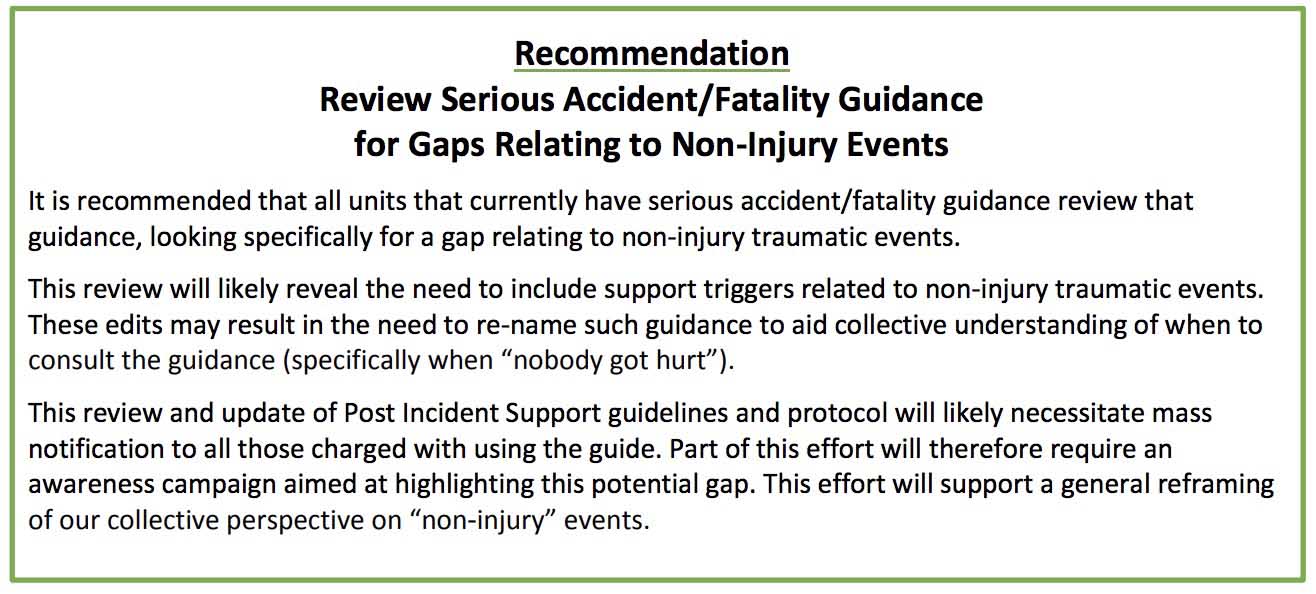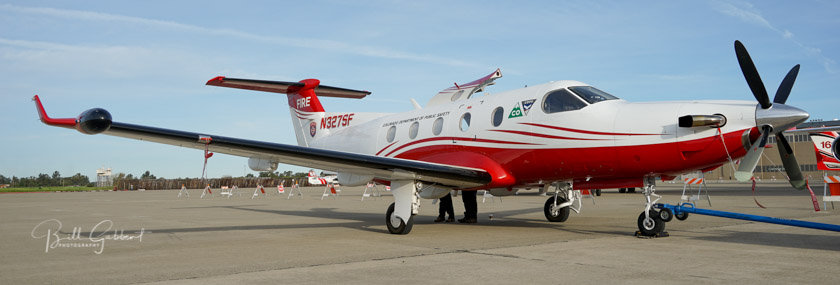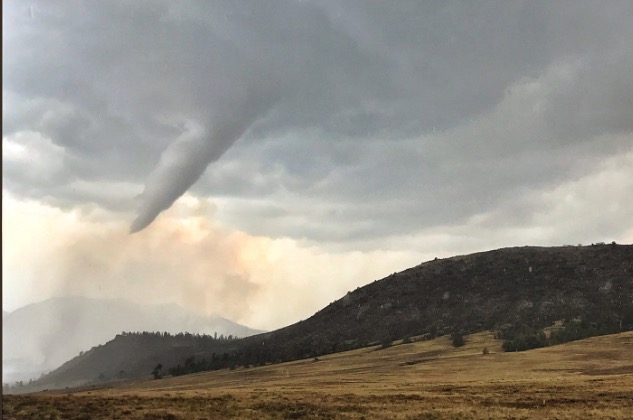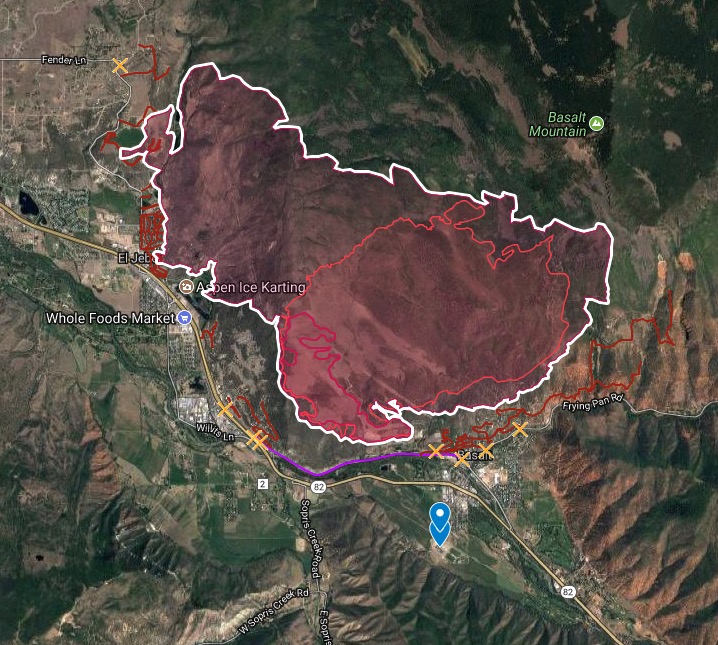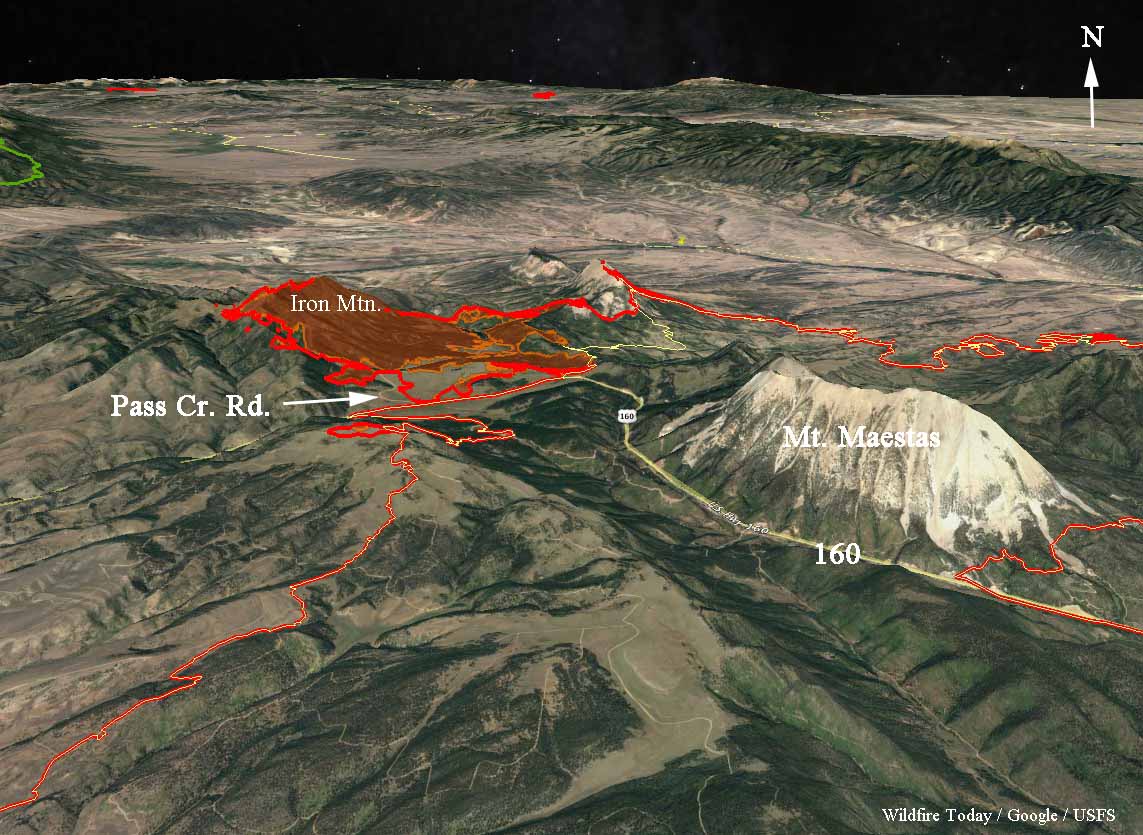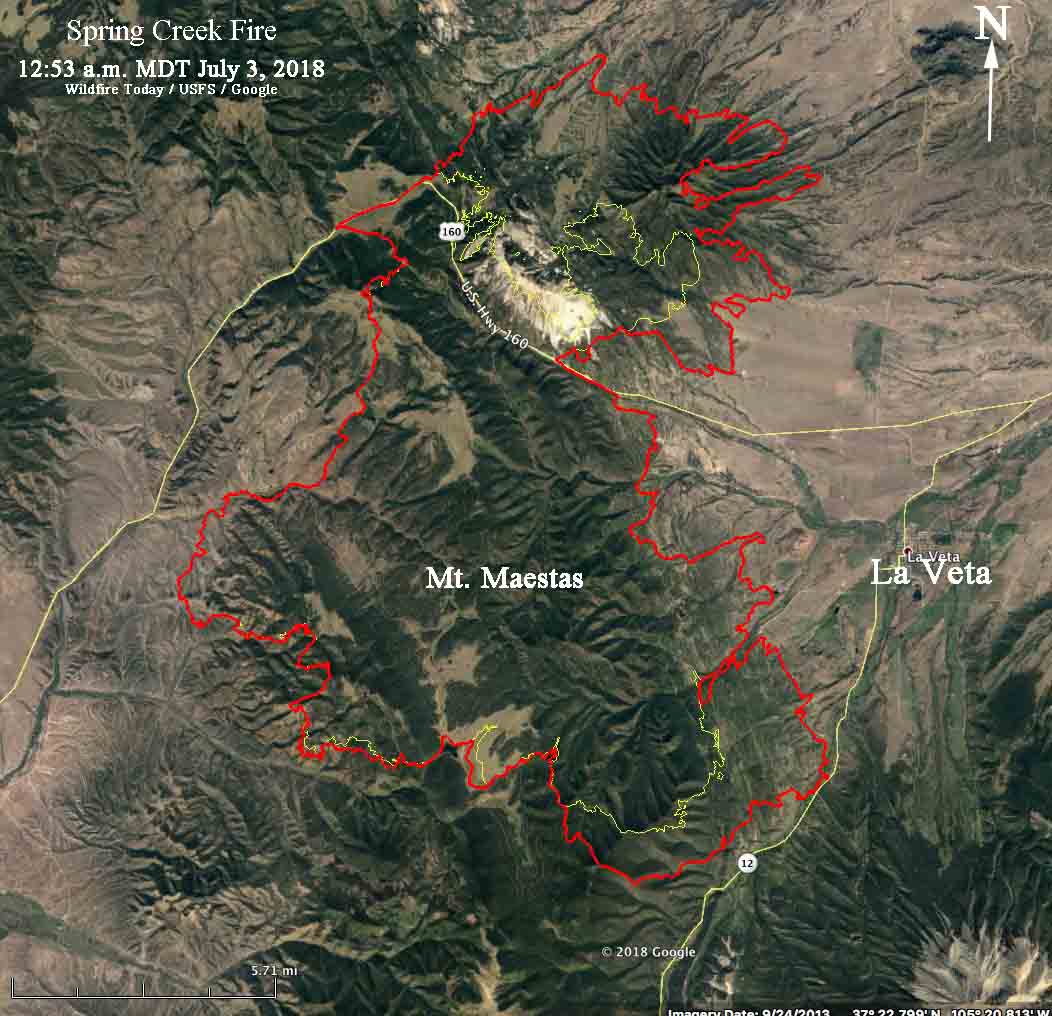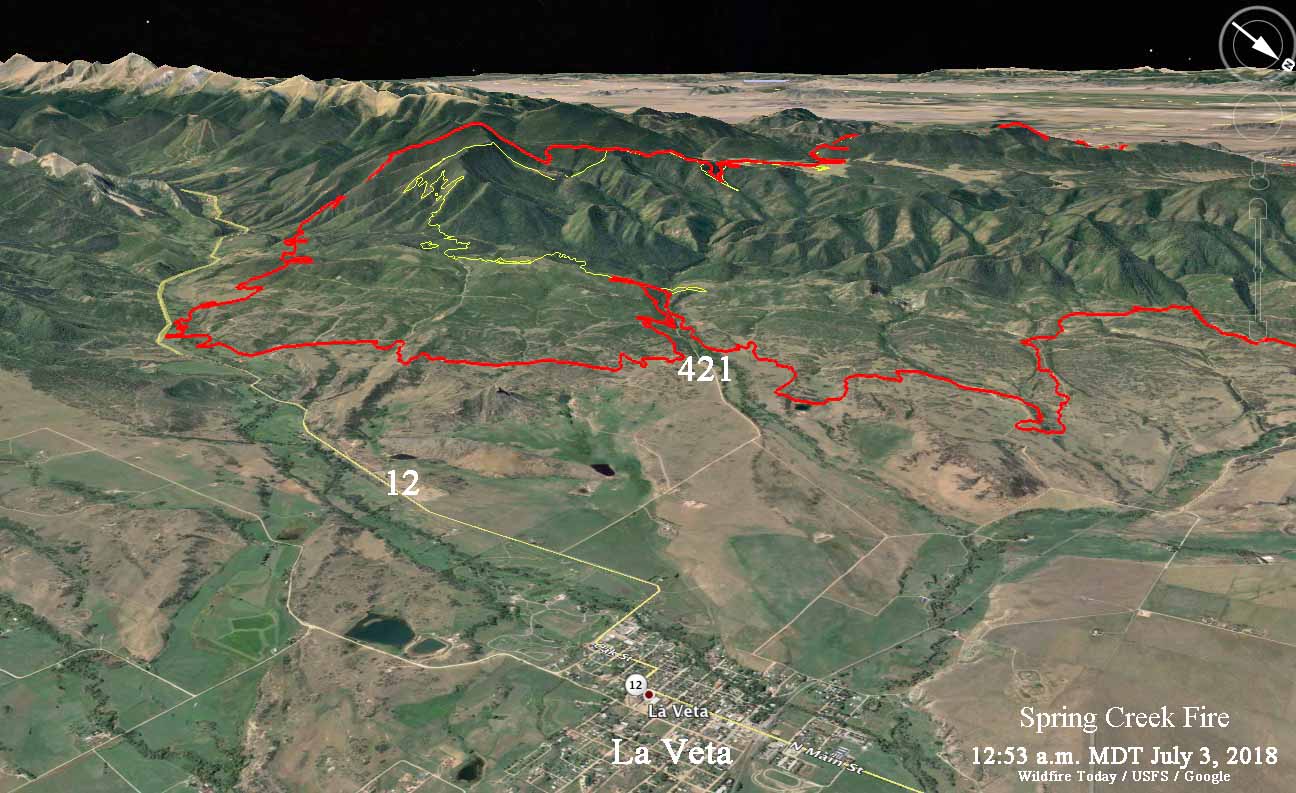Above: photo from the report.
Additional information has been released about the entrapments that occurred on the Horse Park Fire May 27 in a remote area of Southwest Colorado. Earlier we posted two videos that were shot when firefighters hurriedly retreated as the fire advanced, plus information from a “72-hour report”.
Now a 56-page Facilitated Learning Analysis and a 12-minute video are available that break down the incident in even more detail.
To very briefly summarize what happened, while scouting a road for a potential burnout operation, a hotshot crew superintendent and foreman encounter a wall of flames and attempt to retreat. Their truck becomes stuck, forcing them to flee on foot, narrowly escaping the rapidly advancing fire front. Just as they reach safety, they learn that their crew lookout is missing. After nearly 40 agonizing minutes, the lead plane pilot locates her after she ignited an escape fire. It is a compelling story, which is pretty well summed up in this video.


